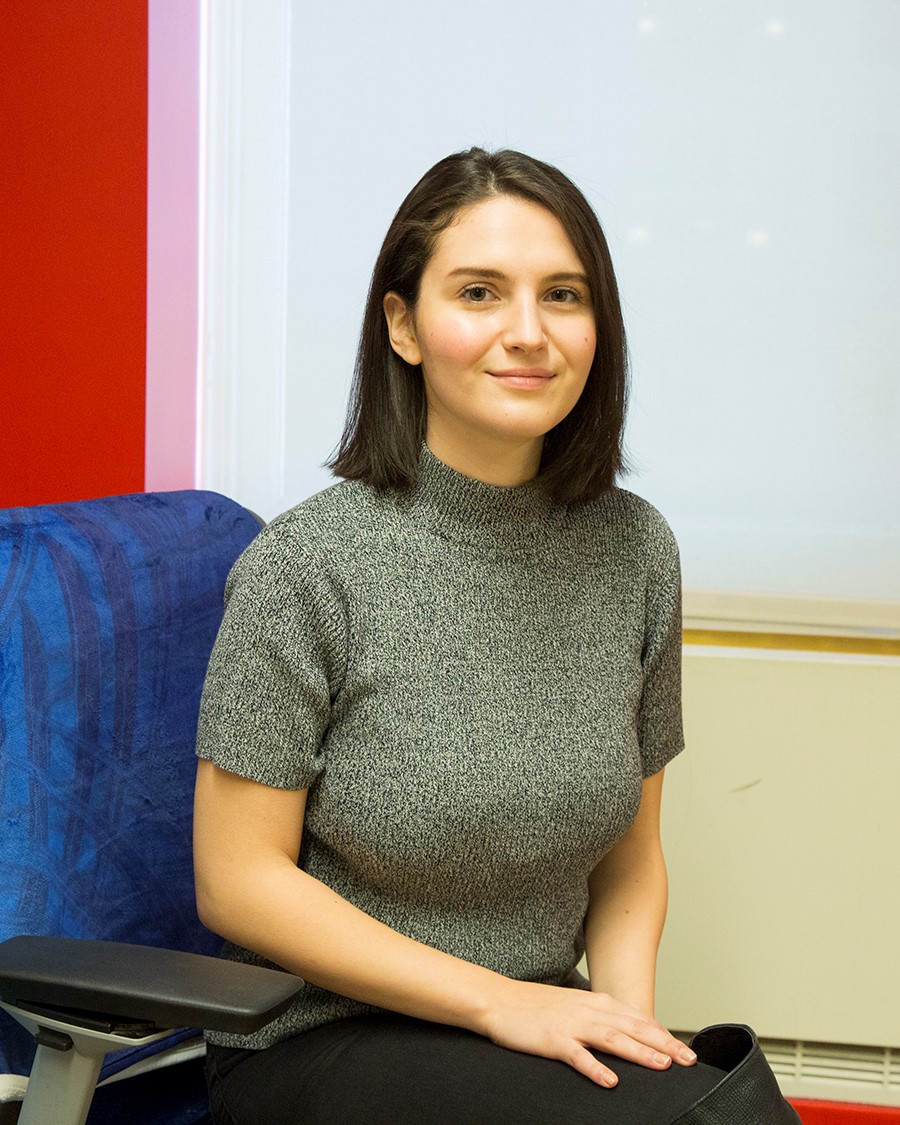More of/Less of: More Gen Next, Less Gen Now on the Road to a Voice Strategy

In a recent interview, the brilliant English actress Diana Rigg said, "Maybe at this stage in my career, it's from the younger generation that I have the most to learn." Speaking as a member of an industry in which the younger generation has a historic level of representation, I couldn't agree more with the woman they know as Game of Thrones' Oleanna Tyrell. (To me, though, she will always be Emma Peel. If you're over 40 you'll get the reference.)
Ms. Rigg's comment sparked an idea that caught fire when I read a paper that OMD Create team member Elena Havas (pictured above) wrote to help clients access their brand's voice marketing readiness and compatibility: Why not use this space to showcase more of the next generation of leaders and less of the current one? With that thought in mind, I sat down with Elena to discuss her roadmap to voice marketing.
Mainardo de Nardis: Elena, I was very impressed with your paper. What inspired you to create the voice roadmap?
Elena Havas: With consumers growing more comfortable with the voice economy, our clients are increasingly eager to jump into this new medium. To make sure that they aren't taking a "ready-fire-aim" approach to the category, we wanted to give them a framework for consideration, and an approach that would support creating a strategy for long-term transformation into this new medium.
de Nardis: You broke the process down into three steps: Listen. Tune. Amplify. Can you walk us through each step?
Havas: The first step -- "Listen" -- is about observing the current landscape. What are brands within and outside your vertical are doing to incorporate voice technology? Which digital properties, tools, experiences or assets can your brand leverage to offer something valuable in an increasingly cluttered space? New features and communication modes should provide convenience, solving a need or consumer desire.
de Nardis: In other words, don't spend the time and resources building a consumer-facing product just to say you did?
Havas: Exactly! Many brands have made the mistake of force-fitting voice products into their customer services, especially at the wrong time, because they didn't stop to ask if this is making communication between the brand and the consumer simpler or better. If voice technology can't support that key value proposition, it's not the right time.
de Nardis: So how do you know when it is the right time?
Havas: First, pick a starting point. Assess which features or products your technology can support along with what your consumers may be ready to adopt, both now and later. Begin with owned and existing properties before jumping into the voice assistant skill or action product realm. By investing in a clear and cohesive voice strategy up front you are future-proofing for technology advancements to come.
de Nardis: What is the key question to ask in the "Tune" phase?
Havas: How can your mobile app, website, chat bot, social media or upcoming advertising campaign work to incorporate new voice technology or an established voice assistant? There are short term ways to fine tune your brand's voice presence, something as simple as enabling "voice to text" keyboard support or optimizing your "quick answers" on Google AdWords for better SEO on voice assistant platforms. This year, we expect to see a continuation of lower price point smart speakers to drive market penetration. As gifting grows during the holiday season, this Q1 might be the right time to begin building an action or skill.
de Nardis: What if a skill or action is too much of an investment?
Havas: Tapping content partners and voice publishers for sponsorship is a low-risk way of entering the space. If you do have a supported experience on a voice assistant platform, you should be iterating and optimizing your product by adding new features, adjusting for seasonal content or expanding your reach to another voice assistant platform.
de Nardis: Is it correct to say that the third step -- "Amplify" -- isn't so much a progression from the second step as it is an alternative to it?
Havas: Absolutely right. So, let's go back to the end of the listening phase. If you're done your assessment and you conclude that investing in a voice product or experience doesn't fit your brand's strategy at this point, consider testing voice as a channel that amplifies a leg of an upcoming media campaign. Try moving budget from traditional awareness channels and test something entirely new within emerging voice platforms. A short-lived activation may give you the type of user learnings you need to invest in something greater down the road.
Click the social buttons above or below to share this story with your friends and colleagues.
The opinions and points of view expressed in this content are exclusively the views of the author and/or subject(s) and do not necessarily represent the views of MediaVillage.com/MyersBizNet, Inc. management or associated writers.


